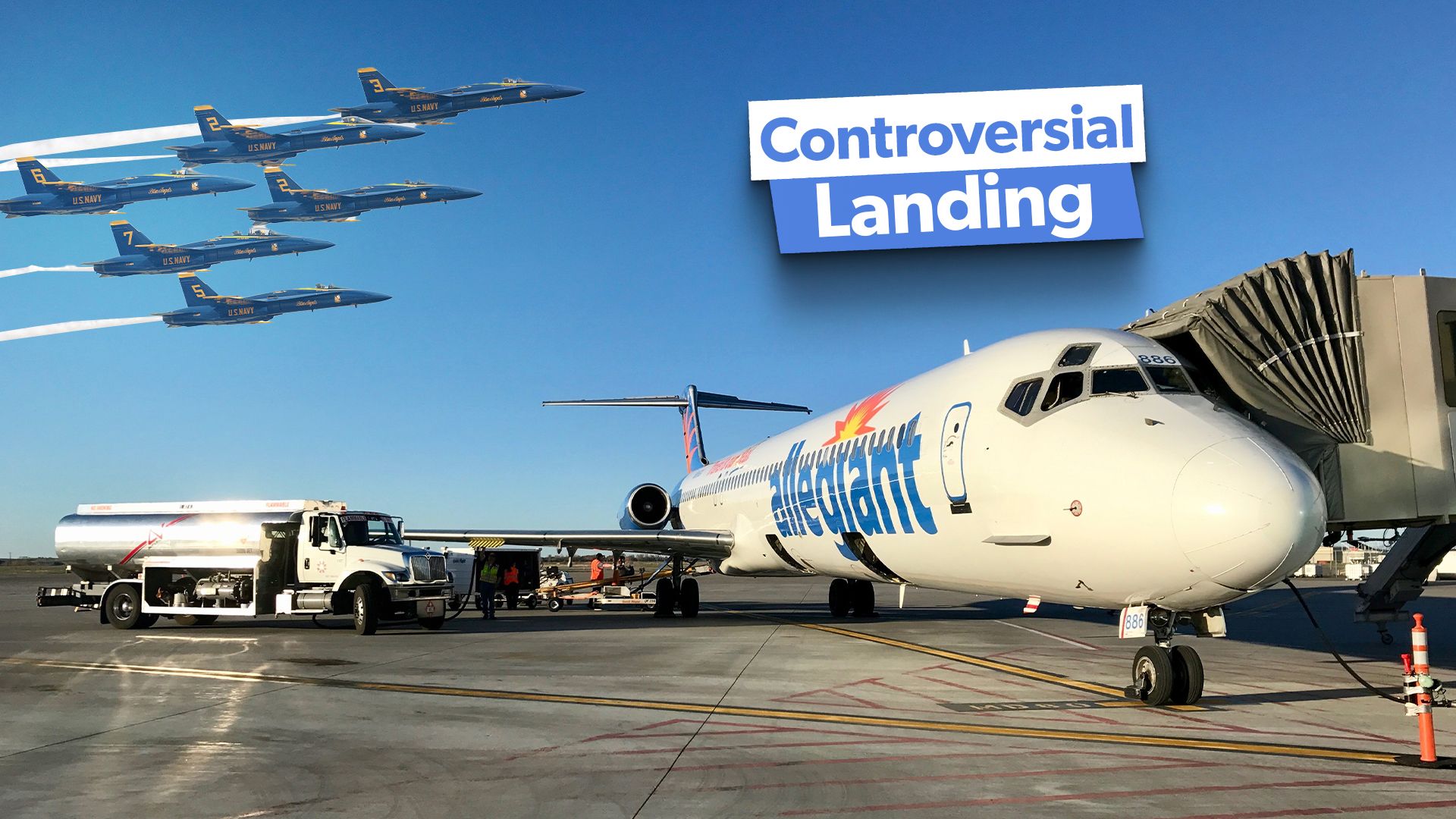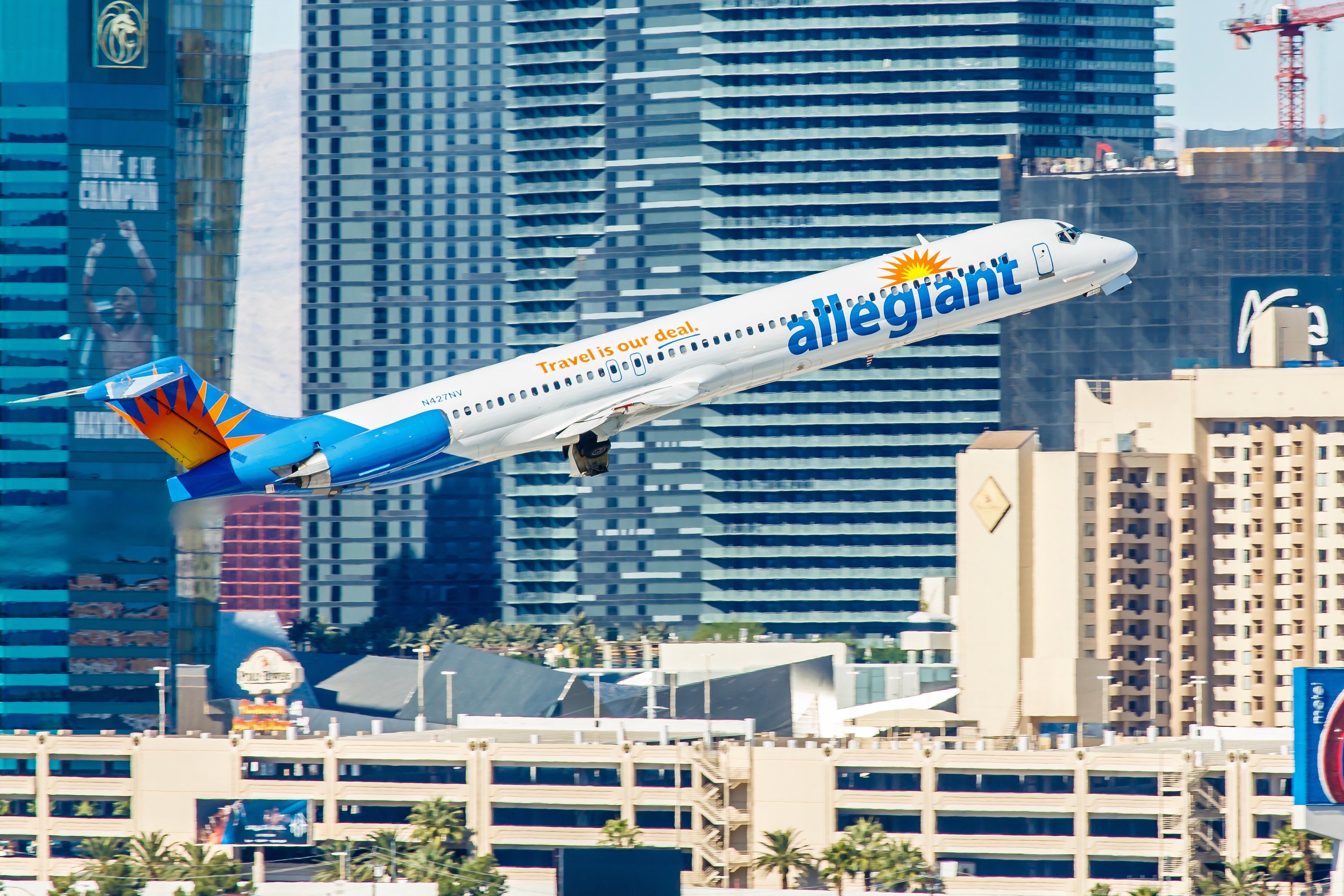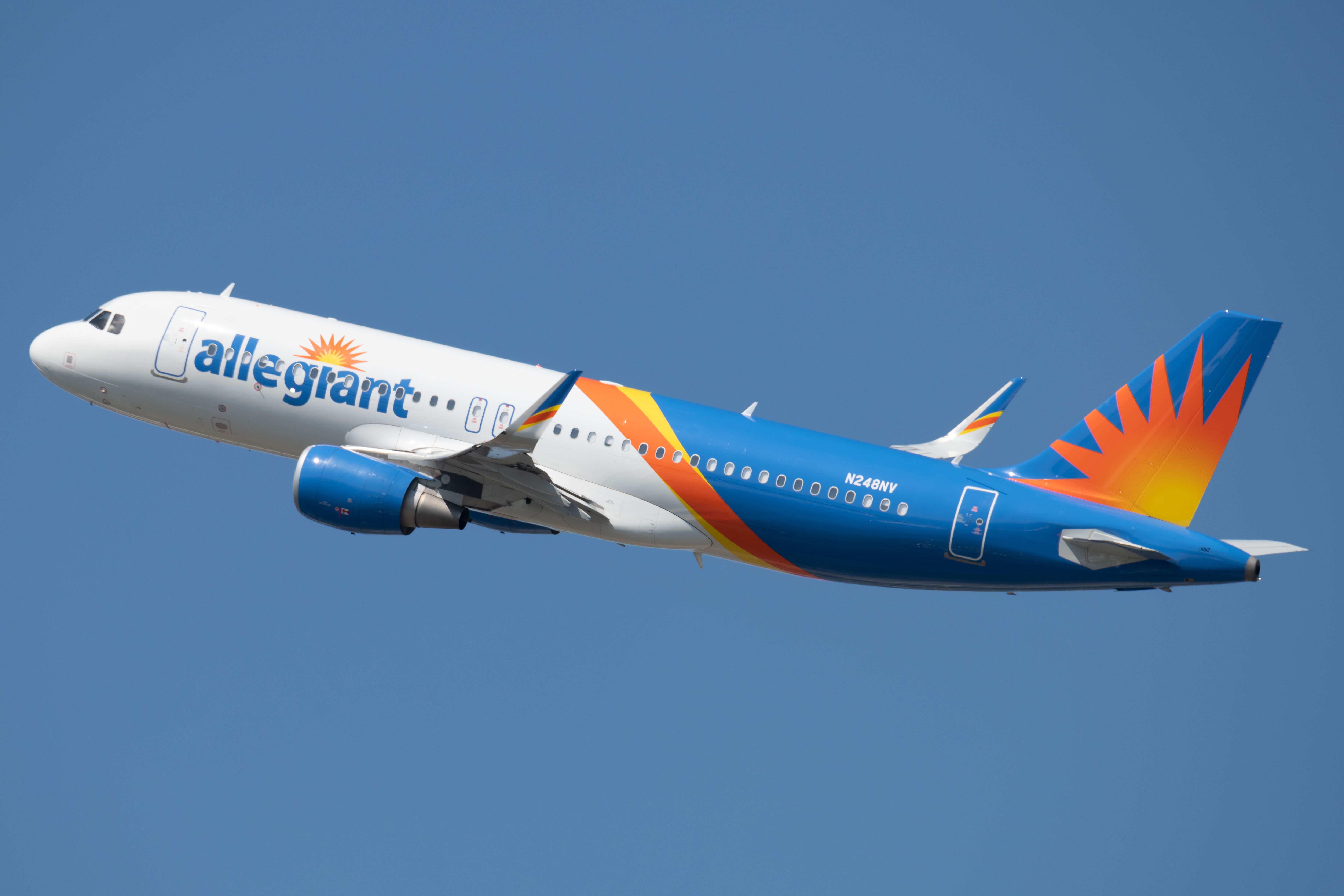Summary
- Inadequate fuel planning and poor emergency procedures led to the 2015 Fargo landing crisis.
- Despite transitioning to an all-Airbus fleet, Allegiant Air faced severe criticism post-2015.
- The 2015 incident exposed serious safety gaps, prompting increased regulatory oversight and negative public perception.
In July 2015, an
Allegiant Air
flight made headlines for breaking a Temporary Flight Restriction (TFR) to make an emergency landing at a closed airport with concerningly low fuel levels—a decision that would subsequently spark widespread concerns about the airline’s safety practices and operational decision-making.
The incident, which took place at Fargo, North Dakota’s Hector International Airport (FAR), involved a series of critical errors and controversial decisions that left the media, the public, and the FAA questioning the safety protocols of Allegiant Air, a low-cost carrier already under scrutiny for its operational standards.
Background information
Allegiant Air, known for offering budget-friendly flights across the United States, has long faced criticism for its safety practices. Before 2015, the airline operated a fleet heavily composed of older McDonnell Douglas MD-80 aircraft, which had become notorious for mechanical issues under its operation. The incident in July 2015 brought these concerns to a head, highlighting significant gaps in the airline’s emergency preparedness and fuel management protocols. According to ABC News, a former Allegiant mechanic reported that essential maintenance steps were often skipped or inadequately performed, raising serious safety concerns.
Photo: Eliyahu Yosef Parypa | Shutterstock
In 2015, the FAA began closely monitoring Allegiant after a series of emergency landings and aborted takeoffs involving its aging MD-80 fleet. A survey found that 46 of the airline’s 86 aircraft had made emergency landings, all of which were MD-80s. At the time, the average age of Allegiant’s MD-80 fleet was 29 years, compared to less than 13 years for its Airbus fleet.
The emergency situation
On July 23, 2015, Allegiant Flight 426 departed from Las Vegas (LAS), bound for Fargo, North Dakota (FAR). However, the flight was delayed by over an hour, which set off a chain of events that would lead to a critical fuel situation. As the flight approached Fargo, the crew discovered that the airport was closed under a Temporary Flight Restriction (TFR), implemented to accommodate the U.S. Navy’s Blue Angels, who were practicing for an upcoming airshow.
Photo: Joe Kunzler | Simple Flying
What made this situation particularly concerning was that the pilots at the controls were not just regular crew members but Allegiant executives—Greg Baden, Vice President of Flight Operations, and Michael Wuerger, Director of Flight Safety. Both were licensed pilots, but their involvement raised eyebrows even further.
The TFR was in place to ensure the safety and security of the airspace while the Blue Angels conducted their practice sessions. This meant that the airport was not available for commercial flights during this period, a situation that Allegiant Air should have anticipated and planned for. Unfortunately, due to the delayed departure from Las Vegas, Flight 426 arrived at Fargo after the TFR had taken effect, creating a critical situation as the aircraft was running dangerously low on fuel.
In a tense exchange with air traffic control (ATC), the Allegiant pilot declared a fuel emergency, stating that the aircraft did not have enough fuel to divert to another airport and could not wait for the airspace to reopen. According to CBS News, the pilot was recorded pleading with ATC, saying, “We’re at Bingo fuel here in about three to four minutes and I gotta come in and land.” The ATC, initially hesitant due to the ongoing Blue Angels practice, ultimately cleared the flight to land, avoiding what could have been a catastrophic outcome.
FAA and public response
The FAA’s response to the incident was markedly critical. The agency launched an investigation into Allegiant Air’s practices, focusing on the airline’s fuel management policies and its preparedness for emergency situations. According to the Tampa Bay Times, the FAA’s investigation revealed that Allegiant had failed to adequately plan for fuel contingencies, a crucial oversight that could have had fatal consequences.
The public and media reaction was equally severe. CBS News highlighted widespread concern about Allegiant’s safety culture, with many questioning whether the airline’s low-cost model was compromising passenger safety. The incident also prompted calls for increased regulatory oversight of low-cost carriers, with critics arguing that such airlines often cut corners to maintain profitability.
FAA criticisms of Allegiant Air
- Inadequate Fuel Planning: Allegiant failed to account for potential diversions and emergency scenarios in its fuel calculations.
- Poor Emergency Procedures: The airline’s protocols for handling in-flight emergencies were found to be insufficient.
- Decision-Making Under Pressure: Airline personnel may have failed to properly recognize airspace restrictions that applied to Fargo’s Hector International Airport when the aircraft landed.
Allegiant Air’s history and reputation
The 2015 incident was not an isolated event but rather part of a broader pattern of safety concerns involving Allegiant Air. The airline’s reliance on its aging MD-80 fleet had been a focal point of criticism for years. Allegiant’s MD-80 aircraft were significantly older than the industry average, leading to a higher frequency of mechanical issues and in-flight failures.
Photo: Philip Pilosian | Shutterstock
In response to these concerns, the FAA moved up a regularly scheduled five-year inspection of the airline in 2016. Allegiant later claimed that the FAA audit gave them “a clean bill of health”, but subsequent reports continued to raise red-flags.
In November 2016, the Tampa Bay Times noted that Allegiant’s planes were four times more likely to experience in-flight failures than those of other major U.S. airlines. A 2018 CBS News investigation further revealed that Allegiant had over 100 serious mechanical incidents between January 2016 and October 2017, including mid-air engine failures, smoke and fumes in the cabin, and other critical failures.
Allegiant defended its safety record by pointing out that many of these issues involved their older MD-80 aircraft, which had since been replaced by newer Airbus A320 family aircraft. By November 2018, all of Allegiant’s MD-80s had been retired, and the airline had transitioned to a fleet composed entirely of Airbus models.
Photo: Vincenzo Pace | Simple Flying
Was there a lasting impact on Allegiant Air?
In the short term, the 2015 emergency landing had a significant impact on Allegiant Air’s reputation. The airline faced increased scrutiny from both the FAA and the general public, with many questioning the safety of flying with a carrier that had repeatedly found itself at the center of safety controversies. The long history of mechanical issues with its MD-80 fleet further eroded public confidence in the airline.
Long-term, Allegiant was forced to make several changes to its operational policies. The airline implemented more rigorous fuel management procedures and enhanced its emergency preparedness protocols in an effort to restore confidence among passengers and regulators. Despite these efforts, the incident has left a lasting mark on Allegiant’s public image, with some passengers remaining wary of flying with the airline.

Related
Not Just Airbus: What Other Aircraft Has Allegiant Air Flown Over The Years?
Allegiant hasn’t always been the all-airbus carrier as it is known today. Let’s delve into the airlines fleet history.
Allegiant Air’s Safety Incidents: Before and After 2015
|
Time-frame |
Incident |
Outcome |
|---|---|---|
|
Pre-2015 |
Multiple emergency landings due to mechanical issues, particularly with MD-80s |
FAA investigations, minimal penalties |
|
Jul 2015 |
Low fuel emergency landing in Fargo due to TFR for Blue Angels practice |
FAA criticism, media backlash |
|
Post-2015 |
Transition to an all-Airbus fleet, improved safety protocols, increased oversight |
Mixed reviews, gradual recovery of reputation |
Wrapping it up
The emergency landing at Fargo in July 2015 was unfortunately a significant and memorable moment for Allegiant Air, highlighting serious gaps in its operational procedures and sparking widespread concern about its safety practices. The incident, which involved breaking a Temporary Flight Restriction due to low fuel, underscored the challenges faced by low-cost carriers like Allegiant, particularly when operating older aircraft. While Allegiant has since taken steps to improve its safety protocols and transition to a more modern fleet, the 2015 incident remains a cautionary tale for the industry.




